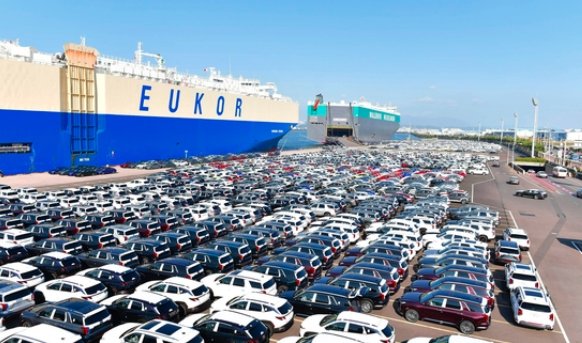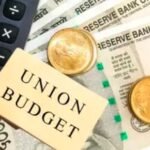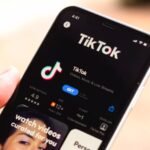South Korea’s top business leaders and negotiators are fanning out across the globe — from Washington to Scotland — trying to stop a 25% tariff wall that could upend the nation’s export-heavy economy. With the clock ticking down to a Friday deadline, Samsung’s chairman is now stepping directly into the fray.
It’s an all-hands-on-deck moment for Seoul, with the world watching.
Trump’s Friday Deadline Puts South Korea on Edge
President Donald Trump has set a deadline: agree to fairer trade terms or face steep reciprocal tariffs. The U.S. claims South Korea’s “subsidized dominance” in sectors like shipbuilding and semiconductors is undercutting American jobs. Washington is threatening a sweeping 25% tariff on select imports unless a new deal is struck.
Korea is feeling the heat.
The Finance Ministry’s top brass, led by Deputy Prime Minister Koo Yun-cheol, boarded planes earlier this week. Koo is set to meet U.S. Treasury Secretary Scott Bessent in Washington on Thursday. That gives Seoul less than 48 hours before the Trump administration’s tariff hammer potentially falls.
South Korea’s message is simple: they want to cut a deal — and fast.

Samsung Chairman Enters the Scene, Signaling Higher Stakes
Samsung Electronics Chairman Lee Jae-yong has quietly joined the Korean delegation’s wider diplomatic push, according to senior government aides speaking on condition of anonymity. Though not officially part of the negotiating team, Lee’s presence in Washington this week has been hard to ignore.
He’s reportedly lined up backchannel meetings with high-level U.S. lawmakers and business leaders to lobby for easing tensions.
Lee’s involvement marks a rare public-facing political move by the chaebol boss, who typically avoids international summits unless they’re tech-focused. His entry signals just how seriously Korean Inc. is taking this threat.
And it’s not just Samsung. Hyundai, Hanwha Ocean, and SK Group executives are also working their connections in the U.S. capital.
Seoul’s Trade Pitch: Shipbuilding, Green Steel, and Jobs
Koo told reporters before his flight that South Korea will push collaboration in areas like shipbuilding, especially green ship tech. The government believes joint projects in shipyards and marine hydrogen engines could serve as a diplomatic bridge.
“We’ll explain our programs and explore long-term cooperation,” Koo said bluntly. “We want a win-win.”
South Korea is betting the following sectors could win Washington’s approval:
-
Shipbuilding: Joint ventures in green propulsion
-
Semiconductors: Shared R&D under U.S. subsidy rules
-
Clean Energy: Collaboration on solar panels and hydrogen storage
The aim is to shift the narrative — from competitor to partner.
Korean Officials Shadow U.S. Negotiators — Even in Scotland
In a highly unusual diplomatic move, Korean officials followed U.S. trade envoys to an international shipping conference in Scotland earlier this week. Sources described it as “gentle pressure,” a strategic show of presence as the U.S. scouted for partners in naval shipbuilding.
One senior Korean trade officer was spotted at several unofficial events, seated a few rows behind the American delegation. Another delegate, speaking off the record, called it “nonstop shuttle diplomacy.”
Whether the strategy will soften Trump’s stance remains to be seen.
But it has turned into a whirlwind week of negotiations.
The Numbers at Stake: Billions in Trade, Thousands of Jobs
South Korea exported nearly $19.8 billion worth of goods to the U.S. last quarter alone in sectors now under review. A 25% tariff would hit electronics, ship components, steel, and more.
Let’s break it down:
| Sector | Q2 2025 Exports to U.S. | Tariff Impact (25%) |
|---|---|---|
| Semiconductors | $6.1 billion | $1.5 billion |
| Ship Components | $4.4 billion | $1.1 billion |
| Consumer Electronics | $5.2 billion | $1.3 billion |
| Steel & Alloys | $4.1 billion | $1.0 billion |
One senior analyst at Daishin Securities warned, “Even a one-quarter delay in resolving this could knock 0.2% off Korea’s GDP growth.”
That’s no small dent.
Business Leaders Brace for Market Reactions
While Seoul scrambles diplomatically, Korea’s top companies are preparing for impact.
Hyundai has reportedly paused export-bound production of select EV models. Samsung is re-evaluating its U.S. pricing strategy for memory chips. The Korea Chamber of Commerce sent an urgent letter to members advising them to “brace for short-term instability.”
One official from a mid-sized parts supplier said bluntly, “We don’t have the scale to absorb a 25% tariff. We’ll lose our U.S. clients.”
Another executive from a steel trading firm put it this way: “We can’t plan. We’re just watching news headlines.”
Trump’s Trade Moves: Political Gamble or Global Play?
Trump’s tariff threat is part of a broader strategy ahead of the U.S. presidential election. He’s been ramping up pressure not only on South Korea but also Japan, Germany, and Canada.
Some see this as campaign messaging — talking tough on trade to appeal to Midwest voters.
Others fear it’s a longer-term shift. In his last rally, Trump declared, “No more one-sided deals. America first — always.”
But international economists warn the move could backfire, especially if allies retaliate.
South Korean lawmakers are already considering their own set of mirror tariffs targeting American agricultural imports and defense contracts — a scenario both sides hope to avoid.


















